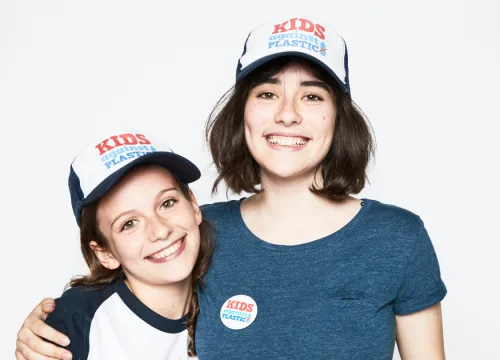Raising money and awareness for octopus protection since she was 10 years old.
Sharing with Others
Sharing with Others
Raising awareness by telling others about something is very important. Every person you tell is an extra person who can make a difference. They might even pass it on to others too (a process known as viral spread – in a good way!). You can share things with friends and family by telling them in person or in an email. You can also spread your ideas even more widely through social media.
Social media is technology that helps people share ideas, thoughts, information, pictures and videos to online communities. People use social media to raise awareness and ask for help. Social media is usually free and is a quick way to reach a wide group of people. Videos and photos on social media help capture people’s attention and inspire them to read and respond to your request!
Types of social media include Facebook, Instagram, Twitter, TikTok and SnapChat. You should always ask your parent or guardian for permission before sharing something on social media. Many social media platforms don’t let children under 13 years of age sign up. If you are under 13, you may need to talk with your parent or guardian and ask if they can post from their account for you.
Top tips for making effective social media posts
 Before you start planning your social media post, talk to your parent or guardian first. Then, when you are ready to post, ask your parent or guardian to post on your behalf.
Before you start planning your social media post, talk to your parent or guardian first. Then, when you are ready to post, ask your parent or guardian to post on your behalf.

1. Do your research.
Make sure the information you share is factually correct!

2. Be positive.
This does not mean your post needs to be happy, but it needs to make the reader feel excited and empowered. Make sure they know what you want them to do (such as donate, pledge support, sign a petition) and what result this can have. This will help make the problem feel more achievable.

3. Use emojis.
People love emojis! They help grab attention and convey things and emotions that words cannot. Remember to use the right emojis for your target audience. It might not be a good idea to use the laughing-crying emoji with businesspeople, for example!

4. Use images and videos.
Images and videos help grab readers’ attention. Whilst it is great to have professional looking images and videos, they do not always need to be perfect. Sometimes an improvised video makes it feel more authentic and personal.

5. Use hashtags, tagging people and organisations.
The more hashtags and tags you include in your post, the wider audience it will reach!

6. Keep it short and simple.
Keep your post short and to the point. People often scroll through social media quite quickly and may not have time to read a long post, so keeping it short and concise is a great way to go.

7. Finish with a call to action.
Generate engagement by asking readers to like or share your posts or ask you a question in the comments section!

8. Share your social media posts at the best times for each social network and target group.
Twitter is busy throughout the day, whereas other networks such as Facebook and Instagram are especially crowded during the afternoon and evening.
Think about when your target group might be active on social media. For example, teenagers may use social media after school (late afternoon) and parents might use social media after their kids have gone to sleep (late evening). Most social media platforms allow you to schedule your post so it will be released at a time you choose.

REFLECT
Sharing with others is not only a great way to raise awareness about an important problem but it’s also an opportunity to get to know others and their opinions.
Don’t forget to have a think about what went well, what you might have learnt for the future, and the impact of your actions.
For example, did anyone respond in a way that surprised you? How did you handle that? Did you find a particularly effective way to communicate your views? How many people engaged with your post?
A Social Media Post that Changed the world
In recent history, social media has been used even more to raise awareness and encourage people to make change. One social media campaign that has been very effective in raising awareness and bringing about change is the #MeToo movement. The #MeToo movement was started in 2006 to support people who had been made to feel uncomfortable, unsafe or bullied because of the way someone spoke about or touched them.
Despite existing since 2006, the movement truly went viral 11 years after its creation on 15th October 2017 when actress Alyssa Milano tweeted #MeToo. By the end of that day, #MeToo had been used in more than 200,000 posts. The #MeToo movement has offered people support to share their stories without fear or shame. In turn, it has created a sense of community. It shows people they are not alone and that there are many people who have gone through the same types of experiences.

Change-Makers
Social media can be a very effective way to communicate with a wide audience. Check out some change-makers who have used social media to make an amazing difference to the world:
Ali Waters Galán
Campaigning for people and businesses to stop using single-use plastics since they were 10 and 12 years old.
Sri Nihal Tammana
Campaigning to promote proper battery disposal and recycling since he was 10 years old.
Amy and Ella Meek
Campaigning for people and businesses to stop using single-use plastics since they were 10 and 12 years old.
Guro Heggholmen
Challenging the representation of girls and women in society since she was 11 years old.













